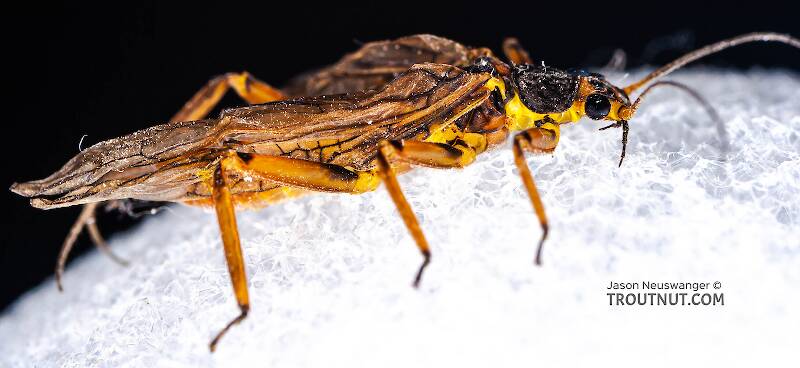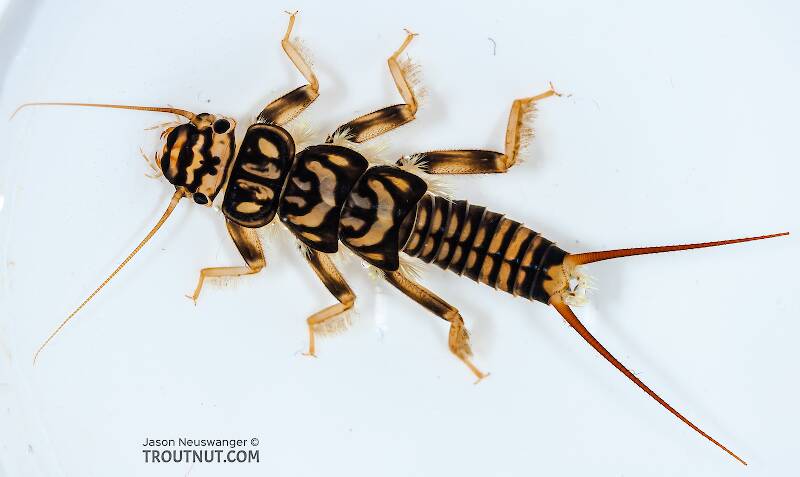
Hex Mayflies
Hexagenia limbata
The famous nocturnal Hex hatch of the Midwest (and a few other lucky locations) stirs to the surface mythically large brown trout that only touch streamers for the rest of the year.
Featured on the forum

This one seems to tentatively key to Holocentropus, although I can't make out the anal spines in Couplet 7 of the Key to Genera of Polycentropodidae Larvae nor the dark bands in Couplet 4 of the Key to Genera of Polycentropodidae Larvae, making me wonder if I went wrong somewhere in keying it out. I don't see where that could have happened, though. It might also be that it's a very immature larva and doesn't possess all the identifying characteristics in the key yet. If Holocentropus is correct, then Holocentropus flavus and Holocentropus interruptus are the two likely possibilities based on range, but I was not able to find a description of their larvae.

Troutnut is a project started in 2003 by salmonid ecologist Jason "Troutnut" Neuswanger to help anglers and
fly tyers unabashedly embrace the entomological side of the sport. Learn more about Troutnut or
support the project for an enhanced experience here.
Northern Stoneflies
This common name refers to only one species. Click its scientific name to learn more.
Stonefly Species Agnetina capitata
These are sometimes called Northern Stoneflies.
This is the most important Perlidae species in the East.

This stonefly emerged in my aquarium, and unfortunately I severely damaged its wings just trying to catch it. It's still an interesting specimen, especially since I was able to also photograph the nymphal shuck it emerged from. I was surprised by just how light it was shortly after emerging. I photographed it a couple days later when it had darkened considerably; it was a pale, almost pastel yellow at first.
See 2 more specimens...


